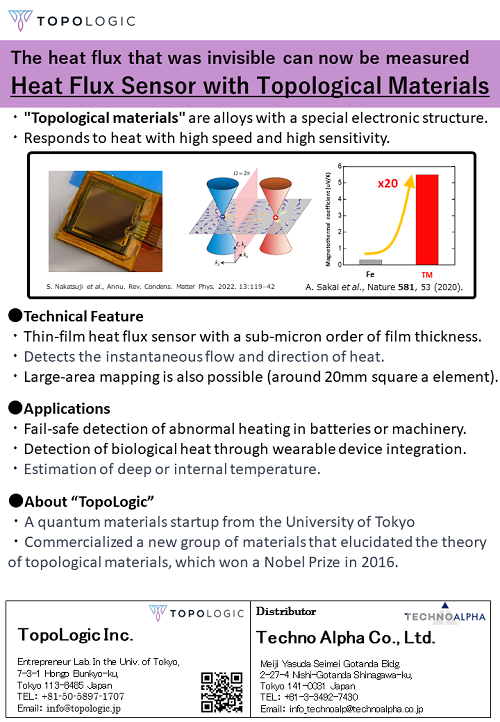Topological materials with quantum characteristics that go beyond conventional wisdom.
Topological Materials
Introduction of Topological materials

TopoLogic Inc., the University of Tokyo's first startup company, is working on Topological Materials
that, due to the uniqueness of their band structure, exhibit two macro effects: the "anomalous
Nernst effect (ANE)" and the "anomalous Hall effect (AHE)." These
enable devices with new
characteristics.
With the anomalous Nernst effect, it is possible to realize a thin and
simple thermal flow
sensor. This opens the door to applications such as biometric sensors capable of detecting thermal
comfort, abnormal detection in batteries or semiconductors, predictive monitoring of manufacturing
equipment failures, heat leakage detection, insulation detection, and thermoelectric devices.
On the other hand, the anomalous Hall effect can achieve ultra-fast
magnetic memory. This has
promising applications for embedded first-level cache memory, low-power memory for IoT devices, and
non-volatile logic devices.
Tehno Alpha will promote advocacy and projectization of the company's topological materials in
collaboration with TopoLogic Inc. The business model consists of selling or licensing the company's
intellectual property.
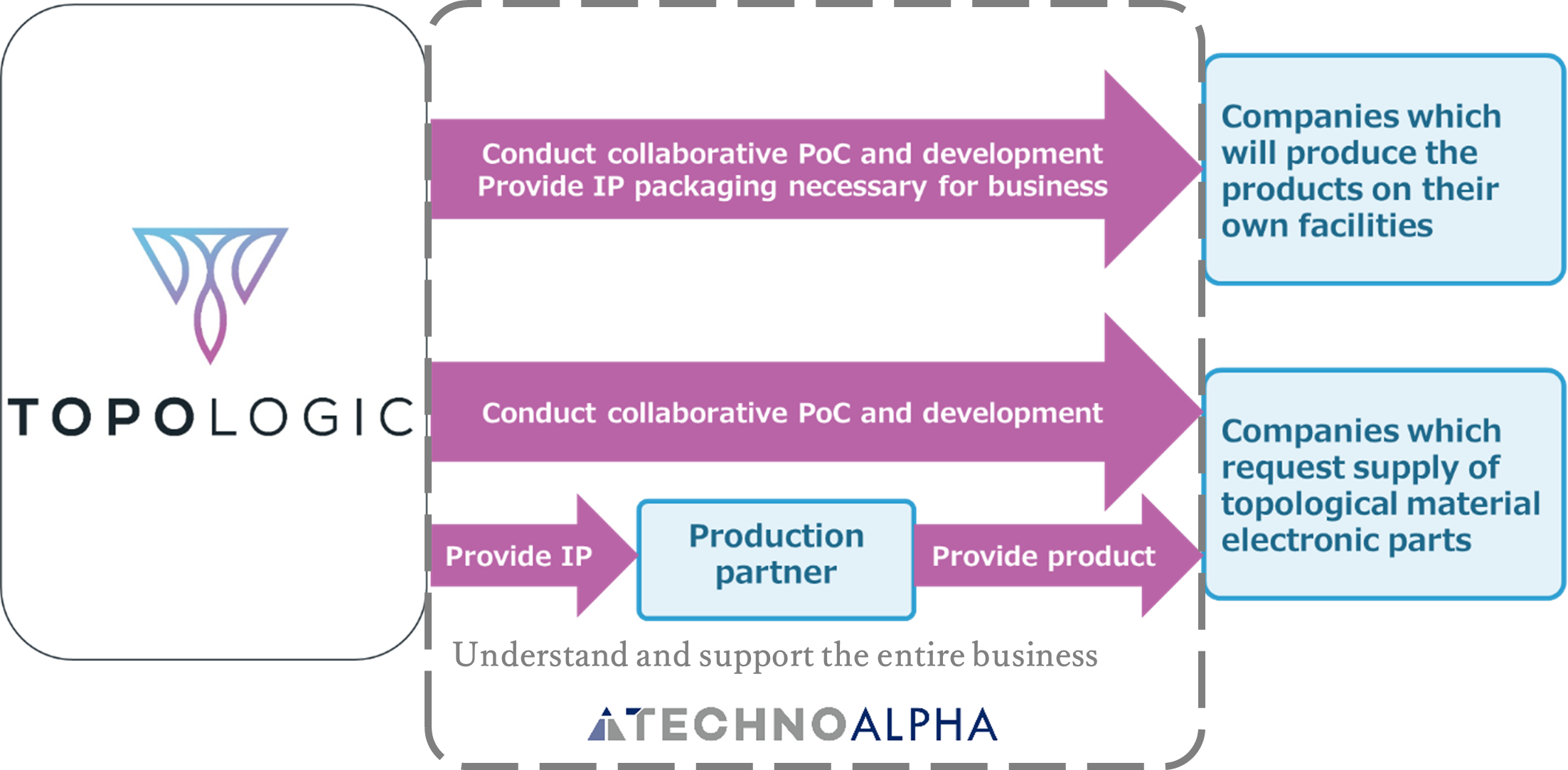
Fig. Business model scheme
What is “topological materials?
Topological materials are substances with unprecedented electron structures that were awarded the
Nobel Prize in Physics in 2016. In the past, similar discoveries have been made in the realm of
semiconductors. Topological materials derive their name from their topological features (topology)
within the electron bands, which include singular points such as Weyl points and Dirac points. These
singular points give rise to highly potent virtual magnetic fields (microscopic magnetic fields) and
induce unique electron flow within the material. As a result, they exhibit various electromagnetic
properties unlike those found in other materials.
The main macroscopic effects stemming from the band structure of topological materials are the
anomalous Nernst effect and the anomalous Hall effect. These effects are a consequence of the
influence of the virtual magnetic field in topological materials and are particularly characteristic
of them. These effects are not observed in existing materials, allowing for the realization of
devices and electronic components with entirely novel structures.
One of these distinctive macroscopic effects, the anomalous Nernst effect, is a type of
thermoelectric effect where a voltage is generated in response to a temperature gradient within a
material. A similar thermoelectric effect known as the Seebeck effect is commonly recognized, but
while the Seebeck effect generates a voltage potential in the same direction as the temperature
gradient, the anomalous Nernst effect generates a voltage potential perpendicular to the temperature
gradient. Conventional thermoelectric materials faced challenges such as complex structures, limited
thinness, and high costs due to the voltage differential aligning with the temperature gradient. In
contrast, utilizing the anomalous Nernst effect in thermoelectric devices allows for the design of
highly versatile thermoelectric devices, as the direction of the temperature gradient and voltage
potential differ.
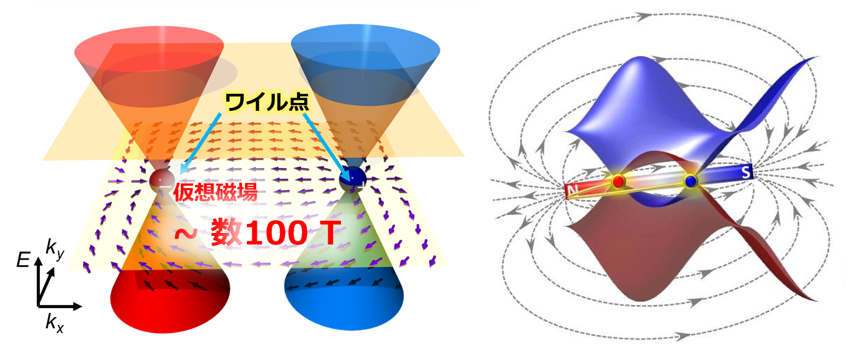
What is TopoLogic Inc.?
TopoLogic Inc. was founded in July 2021 as a quantum materials startup originating from the research
group of Professor Tomo Tsujii in the Department of Physics at the University of Tokyo. The company
aims to implement and bring to society new devices based on "topological materials" researched and
developed by the group.
TopoLogic focuses on the lateral thermoelectric conversion effect and spintronics based on
novel orders, striving to achieve the development of devices that were previously challenging to
realize.
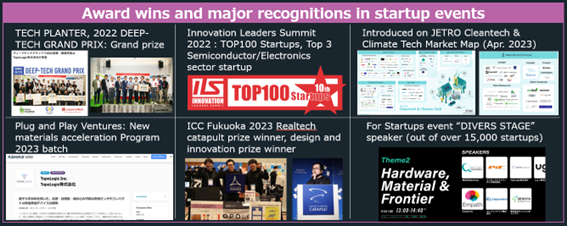
Fig. Awards / Selections records
Device & Applications
Heat Flux Sensor “TL-Sensing™
Additionally, this sensor can be manufactured through traditional processes like sputtering, allowing for cost-effective production and easy integration into existing manufacturing lines. It offers economic advantages compared to conventional models (ranging from tens of thousands to a few hundred thousand yen). Furthermore, it can be deposited on a variety of substrates, including silicon, plastic, and film, without being restricted by substrate type.
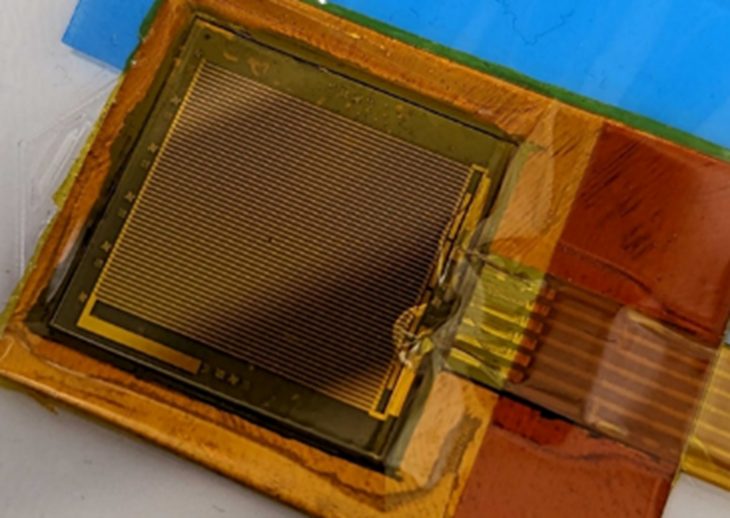
| Dimensions | Substrate - 20×20×0.5mm
Element Circuit - Meander structure |
Demonstrates thinner profile compared to existing heat flux sensors |
|---|---|---|
| Thermoelectric Performance | 0.2μV/W/m2 | Exhibits comparable thermoelectric performance to existing heat flux sensors |
| Time Constant | 0.01seconds | Shows a 100x faster response compared to existing heat flux sensors |
| Materials (Sputtering) |
MgO Substrate: thickness 0.5mm
Topological Material: thickness 100nm Surface Protection: Kapton Tape |
Features a simple structure compared to existing sensors, providing excellent reliability and manufacturability. |
| This device is an easy-to-use demonstration sensor available for collaborative testing and evaluation. During collaborative development, we will tailor the sensor's specifications, such as area, shape, thickness, and substrate material, to meet your company's specific needs. | ||
For Temporary Use
As the sensor provides analog output, when evaluating parameters like sensitivity, we recommend utilizing your existing data logger, measurement power source, oscilloscope, or similar equipment to assess and verify the sensor's performance.
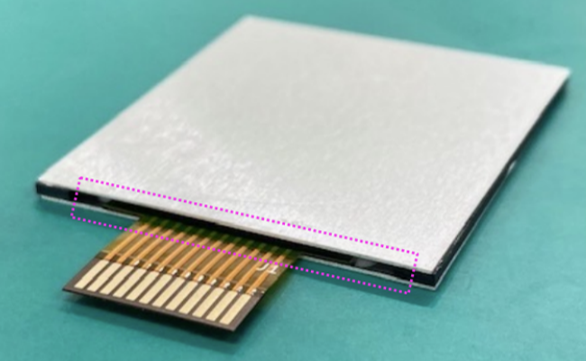
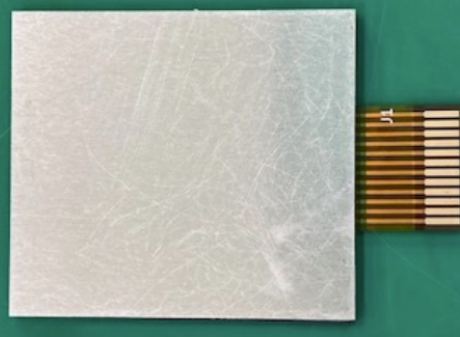
| Dimensions | Substrate - 20×20×0.5mm
Element Circuit - Meander structure Package: 36×32×1.6mm |
Demonstrates thinner profile compared to existing heat flux sensors |
|---|---|---|
| Thermoelectric Performance | 0.2μV/W/m2 | Exhibits comparable thermoelectric performance to existing heat flux sensors |
| Time Constant | 0.5 seconds | Shows faster response compared to existing heat flux sensors |
| Sensor Element (Sputtering) |
MgO Substrate: thickness 0.5mm
Topological Material: thickness 200nm |
Features a very simple structure compared to existing sensors, providing excellent reliability and manufacturability |
| Sensor Configuration | Aluminum packag
Heat bonding using silicone resin and TIM material for thermal connection |
Packaged to protect the sensor element |
| Price | Available for lending starting from 100,000 yen per 2 weeks | Long-term lending and evaluation support are also available |
| If you're interested in borrowing our sensors, please don't hesitate to contact us for more details on availability, pricing, and any specific requirements you might have. Our goal is to provide you with an opportunity to experience and evaluate the capabilities of our sensors effectively. | ||
Applications of Heat Flux Detection
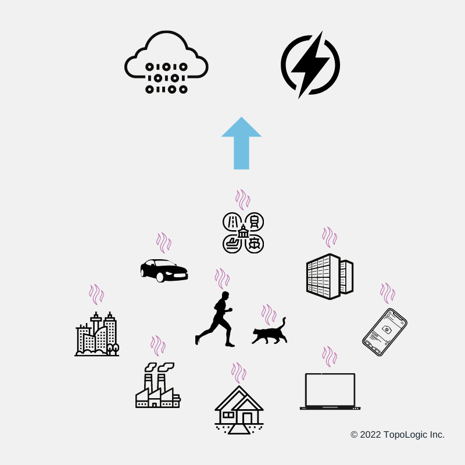
For instance, they can be used to visualize heat generation in manufacturing processes, detect abnormal heat generation, and predict and monitor failures based on heat. In the context of wearable devices, they can monitor heat dissipation (absorption) from the human or animal body, allowing for estimation of health conditions and comfort levels. These sensors can also be integrated into automotive and IoT devices, enabling diverse heat-related monitoring.
Additionally, by introducing substances that react with specific chemicals on the sensor's surface to generate reaction heat absorption, it's possible to detect various substances like gases or antigens. These sensors have the potential to detect heat absorption from various activities in the world, making them versatile tools for activity monitoring.

Chemical Sensors and Gas Sensors
By introducing a catalytic layer as a functional film onto the surface of the heat flux sensor
element,
it becomes possible to enhance reactions with specific substances, enabling the detection of heat
flows
resulting from these reactions. Leveraging this principle, for instance, by employing a platinum
catalytic layer to promote the reaction with hydrogen, the sensor can detect the presence of
hydrogen
based on the resulting heat flow. Using the sensitivity of this type of heat flux sensor, it's also
conceivable to detect hydrogen concentrations as low as a few parts per million (ppm). This
capability
allows for the detection of even minute hydrogen leaks from pipes or tanks in hydrogen plants and
fuel-cell vehicles.
Moreover, by selecting an appropriate functional film, the application can extend beyond
hydrogen
detection. It becomes possible to detect various types of gases, such as ammonia or hydrocarbon
gases.
This versatility in gas detection is achievable by tailoring the catalytic layer to suit the
specific
gas of interest.
Optical Sensors
When light shines on a heat flux sensor (or an optical absorption film placed on its surface), the energy of the light is converted into heat. By detecting this heat with the heat flux sensor, the device can be functioned as a light-receiving element, essentially acting as an optical sensor. Leveraging the high-speed response of TL-Sensor™ heat flux sensors, light reception can be detected within an order of 0.01 seconds. This capability enables a more responsive feedback system compared to conventional light-receiving element-based systems.
High-speed Memory
At present, it may not be possible to provide specific application examples, but it holds the potential to realize promising memory technology in the future.
Pamphlet
Contact Us
Please enter the input form below for asking quote, P.O. or any questions.


